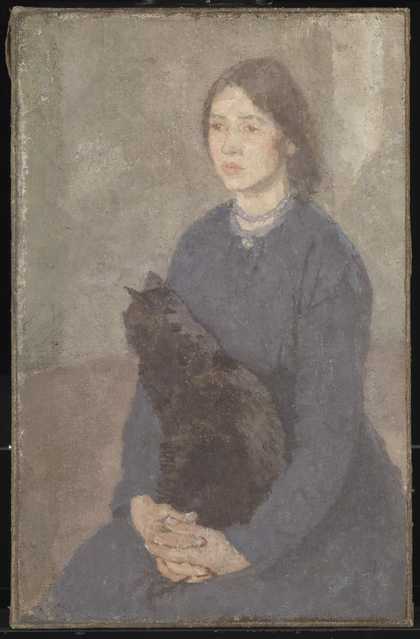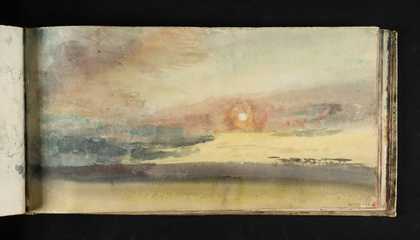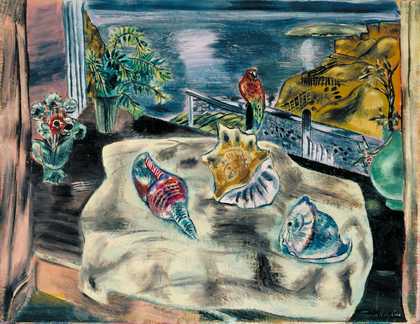
Gwen John
Young Woman Holding a Black Cat (c.1918–22)
Tate
Gwen John (1876–1939) is perhaps best known for her subtle portraits of women, painted with a muted, chalky palette. Yet within these apparently serene works, often painted in series, she managed to visualise the intensity of her artistic engagement. As one sitter described: ‘I feel the absorption of her personality as I sit.’ The artist was also fascinated by the process of painting and made detailed notes on method, tone and colour as she worked.
Although solitude and focus were required to produce the works, she was also involved with the art scenes in London and Paris, and displayed her paintings there. The American collector John Quinn was an important patron of hers from 1910.
While living in Paris, she modelled for the sculptor Auguste Rodin from 1904 and had an intense affair with him. In 1911 she moved to Meudon, a suburb of Paris, where she joined the Catholic Church. Having mainly exhibited in London in the 1900s, her focus moved to Paris and she exhibited regularly there from 1919.
Her work was highly respected by fellow artists and critics, and she achieved some public acclaim in the 1920s. Towards the end of her life, however, she devoted herself to a humble and devout life with her art, her cats and her garden. Was she happy? ‘A beautiful life is one led, perhaps, in the shadow, but ordered and regular, harmonious,’ she said. ‘I must stay in solitude to do my work.’
Gwen John, curated by Emma Chambers, Curator, Modern British Art, opens at Tate Britain on 9 March.


